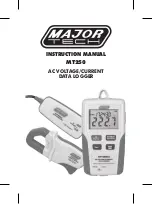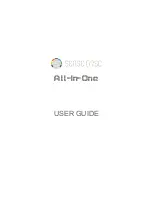
TECHNICAL NOTES FOR USERS - NOTE #033
The Procedure for Calibration For Infrared Moisture Meters
page 1
Visilab Signal Technologies Oy
Sepäntie 4
Tel. +358-45-635 4885
FI-07230 Monninkylä
Y0631208-0 ALV Rek.
FINLAND
www.visilab.fi
VAT FI06312080
Mäntsälä Reg. 365.258
Accurate Calibration With AK30/AK40/AK50 Moisture Meters Using a Climate Cham-
Accurate Calibration With AK30/AK40/AK50 Moisture Meters Using a Climate Cham-
Accurate Calibration With AK30/AK40/AK50 Moisture Meters Using a Climate Cham-
Accurate Calibration With AK30/AK40/AK50 Moisture Meters Using a Climate Cham-
Accurate Calibration With AK30/AK40/AK50 Moisture Meters Using a Climate Cham-
ber
ber
ber
ber
ber
Performing Multipoint Calibration when Working with a Climatic Chamber and a Balance
In this more accurate way the calibration is done as follows. Follow this procedure step by step and you will get the most accurate
calibration to your meter. For best results, extra care is required.
0. By using some general-purpose calibration table of similar basis weight, study the sample on each side with the moisture
meter to observe any differences. Coated side vs. uncoated side may give different readings. You should decide
which is the important one.
1. Cut the sample paper/board to a size suitable for the chamber and the balance's sample holder. Make sure there is no
contact to nearby walls while measuring the weight. Punch a few holes to the sample if your chamber has hooks
for holding the samples. Note that this must be done at an early stage, you cannot do it later when you have started
measurements. Use some reasonable code marking in each sample for easy recognition.
2. Prepare an Excel sheet for collecting data and for automatically calculating moisture readings from the weights when the
dry weight is known. Prepare some graphics too to show the resulting curve after getting in some data. Then you
can copy this sheet as a model for all later calibrations. Visilab can also send you a sample sheet.
3. Place the sample into an oven for two hours at about +102 C
4. While drying, place the balance and the moisture meter into the climatic chamber. If your balance can not withstand
the humid conditions, do the weighing outside the chamber with for example a plastic bag. Start the chamber control
system and adjust the relative humidity to the lowest possible value. Arrange the moisture meter, if possible, so
that you can simultaneously read both the balance and the meter. Using your PC for reading the meter is the best
way to do it. The sample should be later placed so that the surrounding air can circulate around it and the wetting
will be even at every point on the sample. The moisture meter
should be in SCALE calibration mode. You can use
the table #68 SCALE for this purpose. Then you will use scaling up of the raw moisture signal with a factor of 100
to make its reading easier and more accurate since you have more significant numbers at disposal. The meter should
now be acquiring data to your PC. Tare the balance to zero with the sample holders in place.
5. Quickly move the sample from the oven to your balance for weighing, preferably using an aluminum or plastic bag. If
the balance is in the chamber, place the bag unopened there and weigh it and open it only after closing the door
by using gloves in the walls. If the balance is on top of the chamber with a suitable measuring cabinet, you might
do the weighing there and after that move the sample to the chamber and open the bag. Weighing the sample in
free lab air will destroy the accuracy in one second. Note that plastic bags may cause static electricity which may
distort weighing results at the dry end. The result will be the dry weight of the sample plus the bag. Tare the bag
away from the weight. Try to read also the moisture meter signal by placing quickly the sample under the meter.
That is usually a difficult task as both the weight and the signal increase so rapidly within the first 0..2 % range.
The dry weight is used later in calculating the actual moisture percentages. Note that this step usually causes the
greatest errors to the final absolute calibration accuracy. Errors of the order of +/-0.5 % are common if
exceptionally careful precautions are not taken. Static can be eliminated by an ion gun. The meter's readings at
the very dry end are usually very useful for depicting how the curve will go.
6. Continue reading the moisture signal-weight pairs as the moisture level slowly increases. Make notes of these readings.
At first, you can take readings every minute but as the wetting of the sample will become slower it may be enough
to take samples at longer intervals (5 min, 20 min, 1 hour). If long intervals are used, it is advisable to place the
meter into low power mode and to tare the balance occasionally. Try to keep the chamber at very low humidities
in the beginning (10 %RH) to slow down the wettening. Thereafter, you can increase the %RH to higher levels
2016-04
All rights reserved. Copyright © by Visilab Signal Technologies Oy.





















